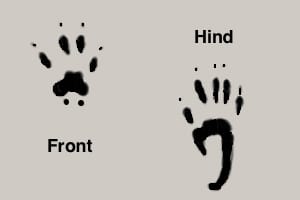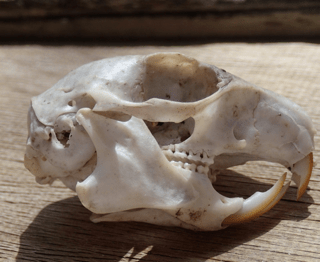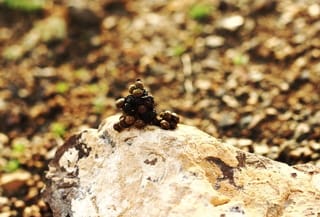This guide initially displays common tracks of all shapes. Use the selectors below to view particular shapes, include rare species, or search by name.
Anything that moves over the ground leaves some sort of marking of its passage. In particular, footprints left behind in soil, snow, mud, or other ground surfaces provide a means of recognizing different species. The illustrations and characteristics listed below highlight key features that can be used to identify the tracks of many of the animals in the area.
Track References
Alderness Wilderness College
Animal Track ID [PDF]
Beartracker
Deerdance
Elbroch, Mark, 2003 Mammal Tracks and Signs: A Guide to North American Species
eNature
Gaits
Lowery, James, 2013 Tracker’s Field Guide. Falcon Guides
Nature Tracking
North Woods Guides
Outdoor Action
Subject Area Experts (all guides)
Steve Cary (butterflies)
Beth Cortright (insects)
Terry Foxx (invasive plants)
Leslie Hansen (mammals)
Richard Hansen (fish, mammals)
Dorothy Hoard (butterflies, trees)
Chick Keller (flowers, herbarium)
Shari Kelley (geology)
Kirt Kempter (geology)
Garth Tietjen (reptiles)
David Yeamans (birds)
Web Development and Content Management
Pat Bacha
Jennifer Macke
Graham Mark
Akkana Peck
Contact
Please contact us for local nature questions and sightings. We welcome comments, corrections, and additions to our guides.
For more information about local nature, please visit our Nature Blog or subscribe to PEEC This Week.
Make Selection
 Drawn based upon US Geological Society image  Photo: Robbie Spoule  Photo: Thomas Vandenverghe |  Squirrel, Ground Squirrel, and Chipmunk(Sciurus, Callospermophilus, Tamias, Otospermophilu)Family: Sciuridae (Squirrels, Chipmunks, Marmots, and Prairie Dogs) Gait: bound Form: small claws; long toes Front Foot: 5 toes; 1.0 in (2.5 cm) - 1.9 in (4.8 cm) Hind Foot: 5 toes; 1.2 in (3.0 cm) - 2.1 in (5.3 cm) The inside toe on the front foot is very small and only registers as a small dot near the heel pad. The inner toes point forward; the outer toes point to the side. Scat varies from small, shapeless black masses to groups of small, unconnected oval pellets. Tree squirrels use large nests located high in the pines. Their presence is often given away by their call. Ground Squirrels and Chipmunks dig burrows. Mammal Guide - Squirrel Mammal Guide - Ground Squirrel Mammal Guide - Chipmunk |
